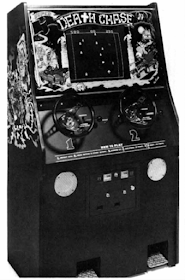I am still trying to collect a complete set of these surveys from the years 1971 to 1984 and have a ways to go. Play Meter published its first issue in December of 1974 but didn't publish its first opeartor survey until 1976.
Replay started in October of 1975 but also didn't publish a survey until 1976 (though they did list a few 1975 numbers in their 1976 survey).
Vending Times was around in 1971 but the first issues I have are from 1974. They didn't publish weekly earnings numbers, however, until 1977 (other than for vending machines).
CashBox was also around in 1971 and probably had the earliest industry surveys.
The first one I have is this one from 1973.
For comparison, here are some numbers from a couple of key years.
First, 1978 (the year before Space Invaders revolutionized the industry):
Average Weekly Earnings - 1978
Vending Times:
Pinball: $48, Pool Tables: $41, Video Games: $36, Shuffle Alleys/Bowlers: $35, Kiddie Rides: $28, Wall Games/Other: $27, Soccer Tables: $20, Arcade Games: $18
Note, for reference, the top earning types of vending machines were cigarette machines ($64) and canned soda machines ($54)
Soccer tables is the same as foosball, "arcade games" includes any coin-op games not included in the other categories
Play Meter:
Pins: $62, Pool Tables: $53, Jukes: $52, Video Games/Arcade Games: $50, Foosball: $41, Wallgames: $34, Shuffleboards: $32
Note that Cocktail video games were not included in the above figures (they generally earned much less than uprights), "Air Cushion Games" were also listed as NA
Replay:
Pinball: $51.50, Pool Table: $44.25, Upright Video Games: $43.75, Jukebox (taverns): $37.50, Jukebox (restaurants): $34.25, Shuffle Alleys: $32.75, Jukebox (Off Street Locations): $29.75, Soccer: $28.25, Wall Games: $24.75, Cocktail Video Games: $24.50, Shuffleboard $24, Air Cushion: $20
Note that in 1976 Replay published figures for both street locations and arcades. I believe that the 1978 numbers are only for street locations
Overall you can see that at the end of 1978, video games were popular but weren't the top earning games. They still trailed behind pinball and pool tables.
That would change starting in 1979 once Space Invaders hit. Unfortunately, I don't have all the numbers from the golden age.
Here are the 1981 numbers from Vending Times:
Video Games: $85, Pool Tables: $52, Pinball: $45, Shuffle Alleys/Bowlers: $35, Arcde Games: $30, Soccer Tables: $24
Of course, average weekly earnings doesn't give a complete picture of popularity.
VT also listed the number of machines on location in 1981:
Pinball: 1,250,000
Video Games: 1,100,000
Pool Tables: 185,000
Soccer Tables: 18,000
Shuffle Alleys: 7,500
Arcade Games: 3,500
For comparison there were 808,600 cigarette machines and 800,000 canned soda machines.
I plan on getting all the numbers from 1971-1984 and will include them in an appendix in the book.






























